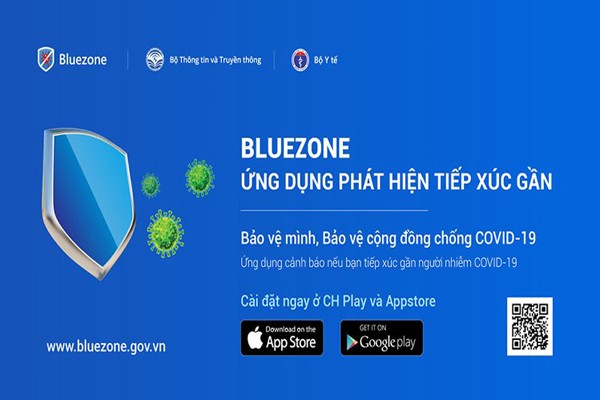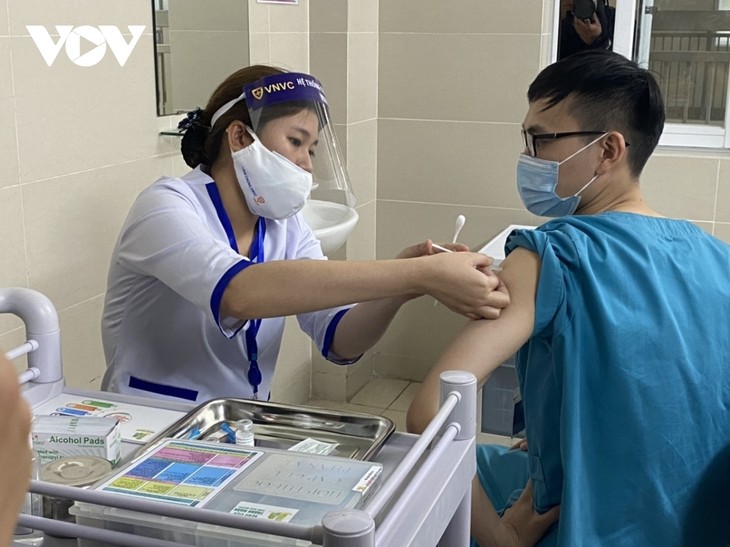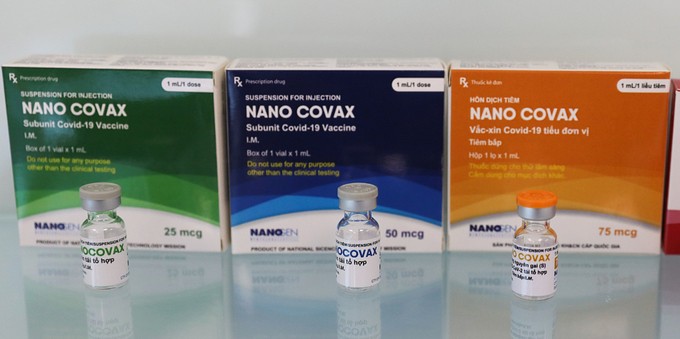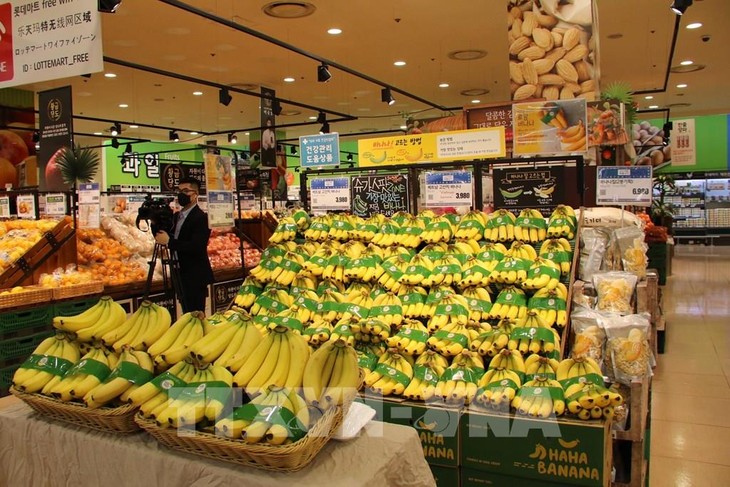B: The coronavirus pandemic has continued to be the dominant problem affecting all countries and social groups. Early this month, the pandemic re-emerged in Vietnam.
A: With its experience containing the previous waves of COVID-19, Vietnam has quickly responded with preventive counter measures. Since the beginning of the pandemic, Vietnam has used something called the F-system of containment.
B: An infected person is F0. People who have had direct, close contact with an F0 are F1. People who have had direct contact with an F1 are F2, and so on. F0s are sent to a treatment facility and their homes are isolated. F1s are taken to a quarantine site. F2 and F3 are asked to isolate themselves at home and avoid contact with other people for three weeks.
 Bluezone, an app to identify close contact with COVID-19 patients Bluezone, an app to identify close contact with COVID-19 patients |
A: Tracing teams use contact-tracing to categorise people according to their proximity to a COVID-19 case and appropriate steps are taken to keep the coronavirus from spreading.
B: Indian listener Muthuvana Sanil Deep told us that there has been a spike in COVID-19 cases in Calicut, Kerala state, where he lives. A partial lockdown was ordered as a safety measure and a complete lockdown is expected at any moment. Authorities have warned people to be careful when they go out.
A: We have read about the 2nd severe wave of coronavirus in India, with record numbers of infections and deaths every day. Mr. Sanil Deep told us that only 25% of office employees are still going to the office. The rest are working from home.
B: Working and studying from home has become a common way to minimize social contact. Vietnamese pupils and students are also studying at home since a new wave of coronavirus arrived early this month. Companies have scheduled their employees to take turns working from home.
 Approximately 100 thousand Vietnamese people have injected AstraZeneca vaccine. Approximately 100 thousand Vietnamese people have injected AstraZeneca vaccine. |
A: Our listeners have been asking about Vietnam’s COVID-19 vaccination program. Which vaccines does Vietnam use? Is vaccination free?
B: Vietnam began administering the AstraZeneca vaccine in March. So far nearly 900,000 people in Vietnam have been inoculated. Inoculation priority has been given to medical workers treating Covid-19 patients, those collecting samples for testing, members of Covid-19 prevention groups, members of the Steering Committee for Covid-19 prevention, and police and army personnel.
A: Vietnam has received two batches of more than 900,000 doses of AstraZeneca vaccine. The first batch was purchased by the Vietnam Vaccine Company in February. The second batch of more than 800,000 doses was given in late March through the Covax facility, a UN initiative for equitable access to COVID-19 vaccines.
B: Vietnam is seeking access to vaccine sources for mass inoculation, but due to a global shortage, it will be able to import only a small number of doses by the end of the year, making it impossible to reach herd immunity by then.
 Vietnam expects to have its own vaccine Nano Covax by August. Vietnam expects to have its own vaccine Nano Covax by August. |
A: The good news is that Vietnam could start mass production of its own Covid-19 vaccine in August. The third phase of human trials for the Nanocovax vaccine developed by Nanogen Pharmaceutical Biotechnology JSC, will be carried out this month in coordination with the Vietnam Military Medical University.
B: The head of the Defense Ministry’s Military Medical Department says that Vietnam is expected to have its own vaccine by August.
A: Until then people must act responsibly and strictly adhere to pandemic prevention measures.
B: With the COVID-19 pandemic a deadly crisis in many countries, we hope you all will stay safe and sound. Please share with us any stories you might have of people displaying courage or showing generosity to others in this difficult time.
A: Any inspiring story that has touched your heart, encouraged you, or cheered you up during the crisis, please share with us. VOV would like to collect and share such stories with all our listeners around the world.
B: I’m reading an email from Christer Brunstrom of Sweden, who tuned in to VOV on 11.885kHz on May 5th. He said that sometimes the signal was completely missing which led him to believe that the transmitter was off. The main problem was the audio quality which made it difficult to understand the contents.
A: Thank you for your feedback. We’ll inform the technicians of this problem.
B: Johnny Antonio Ramírez López of Peru listened to last week’s Letter Box and said: “I was amazed to find out that we can prepare delicious salads from the banana flower. I lived in Satipo, Central Selva of Peru. I grew up in the country and I love rural life. I grew up among banana crops but I never imagined that I could eat the banana flowers. Interesting!”
A: It’s great to correspond with you, Johnny. We have a story about banana flower salad with chicken on our website www.vovworld.vn. We invite you to make a banana flower dish and share your result with us.
B: Johnny asked us what varieties of bananas are grown in Vietnam.
A: Vietnam has many kinds of sweet and aromatic fruits. The most popular one is banana which is grown in all parts of the country. Hundreds of banana varieties are grown in Vietnam. Here are some of the more popular bananas.
 Vietnam's bananas are sold in Lotte supermarket in Soul, RoK. (photo: VNA) Vietnam's bananas are sold in Lotte supermarket in Soul, RoK. (photo: VNA) |
B: The ‘chuoi tieu’ or Cavendish banana is very popular. There are two types of Cavendish banana: the short or dwarf Cavendish banana and the tall Cavendish. Cavendish bananas are curved like a sickle. An unripe one is dark green and turns yellow as it ripens. Its flesh is bright yellow, very fragrant and sweet.
A: ‘Chuoi tay’ is a tall plant with large, short fruits. It grows well in the highlands and is more disease tolerant.
B: ‘Chuoi hot’ is a tall plant with a dark green color. The young stem and unripe fruits are used as fresh uncooked vegetables. It is mainly grown for animal feed because its fruits are full of seeds.
A: Ripe ‘Chuoi ngu’ bananas have a paper-thin skin, making transport difficult without damage to the fruit. Its taste is sweet and very aromatic but the yield is rather low. It is called King banana in the North because in the past Chuoi Ngu were served to members of the Royal family.
B: In recent years, Vietnamese Cavendish bananas have been in demand in competitive markets like America, Japan, Russia, and Dubai. Banana cultivation now covers over 100,000 ha, with outputs about 1.4 million tons per year.
A: Banana has long been a major Vietnamese export, and Vietnam is always one of the top banana exporting countries. Next time you go to the supermarket, you may notice Vietnamese bananas on the shelves.
B: This has been another edition of VOV’s Letter Box. We always welcome your feedback at: English Service, VOVworld, the Voice of Vietnam, 45 Ba Trieu street, Hanoi, Vietnam. Or you can email us at: englishsection@vov.vn. You’re invited to visit us online at vovworld.vn, where you can hear both live and recorded programs. Thank you. Goodbye until next time.